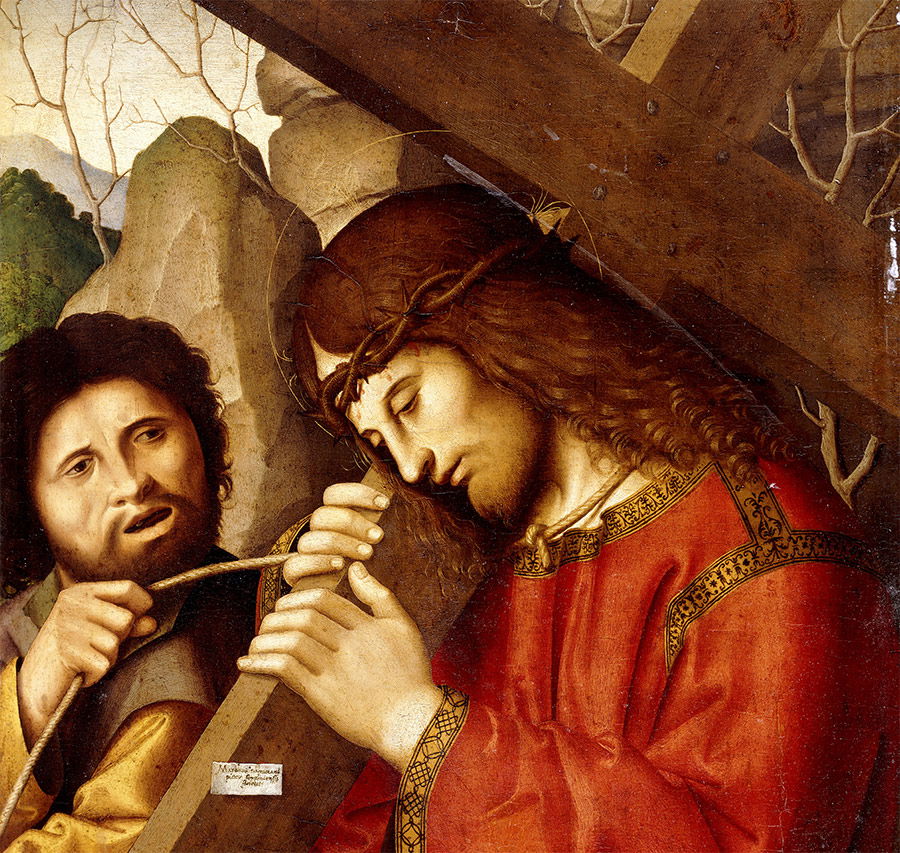Survey the Wondrous Cross
The Crucifixion is at the heart of Christianity and has inspired countless images and experiences.

The idea that Christianity is a historical religion is an ambiguous one. Certainly, Christianity is rooted in historical events. Jesus was born in Bethlehem when Quirinius was governor of Syria and was condemned to die on a cross when Pontius Pilate was prefect of Roman Judaea. However, the Christian religion is not only dependent upon certain historical events. It is a religion that itself has a long and complex history.
The cross, the subject of Robin Jensen’s latest work, is the most ubiquitous of Christian symbols and has appeared on Christian artefacts and in fine art in very different times and cultural contexts. In this generously illustrated book, Jensen sets out in nine chapters the history of the cross from the first reflections on it in the writings of the New Testament to a 20th-century feminist critique and fabrication of the Christa figure. Covering a huge span of time inevitably means that some examples, such as Renaissance altarpieces depicting the Crucifixion, receive the briefest mention. In parts of the book, Jensen relies on the work of other scholars, but she is an expert guide, especially in her section on the various depictions of the cross in early Christian art.
The subtitle of the book promises a survey of the controversies around the use of the cross in Christian worship and in artistic portrayal. There are good discussions of both eighth- and ninth-century iconoclasm in the Christian East and of 16th-century Reformation Europe. Readers may be disappointed by the scant attention paid here to the Puritan iconoclasm of the 17th century during Britain’s Civil Wars and the Commonwealth. Iconoclasm, like the ambivalent view of the cross (how can the cross represent both an agonising execution and a victory over sin and death?), has recurred, and often for quite different reasons, throughout Christian history. The major, persistent controversy hinges on the question of how Jesus, as the Son of God, could suffer and die. This is an old theological chestnut and one intriguing artistic solution to the dilemma, not referred to in this book, is found in Sardinia.
There, the iconography responds to the 12th-century outrage in Spain over depictions of a ‘crucified god’, and fuses the traditional rood arrangement of Jesus on the cross with the figures of Mary and John, the beloved disciple, on either side, along with depictions of the Ascension. In this iconography, chronological time is transposed to theological time. Both event and meaning are fused as the figure of Christ is shown to be ascending while the accompanying figures, Mary and John, as well as Nicodemus and Joseph of Arimathea, through their gestural posture invite the viewer to behold a mystery |and to kneel in worship.
Throughout the book Jensen shows different ways of viewing and understanding the same object. What becomes apparent is that there are no clearly defined epochs or entirely different styles of depicting the cross and the Crucifixion. Jensen reminds us that the Byzantine style depicts the dying Christ, but that it also informed the 12th-century painted panel crosses of Umbria, whose panels depict the whole Christian story, including scenes from the Resurrection.
There were undoubtedly historical shifts in sensibility, in ways of praying and of experiencing the cross as a religious symbol, but it would be too much of a generalisation to say that the cross became, after the first Christian millennium, a sign of God’s solidarity with human suffering and death. As with every complex history, there are not only elements of change but also of continuity. How this is made manifest in the depictions of the cross in Christian history is revealed in this rich and rewarding book.
The Cross: History, Art and Controversy
Robin M. Jensen
Harvard 280pp £25
Christopher Irvine is an Honorary Senior Research Fellow in the School of History at the University of Kent and is the author of The Cross and Creation in Christian Liturgy and Art (SPCK, 2013).




